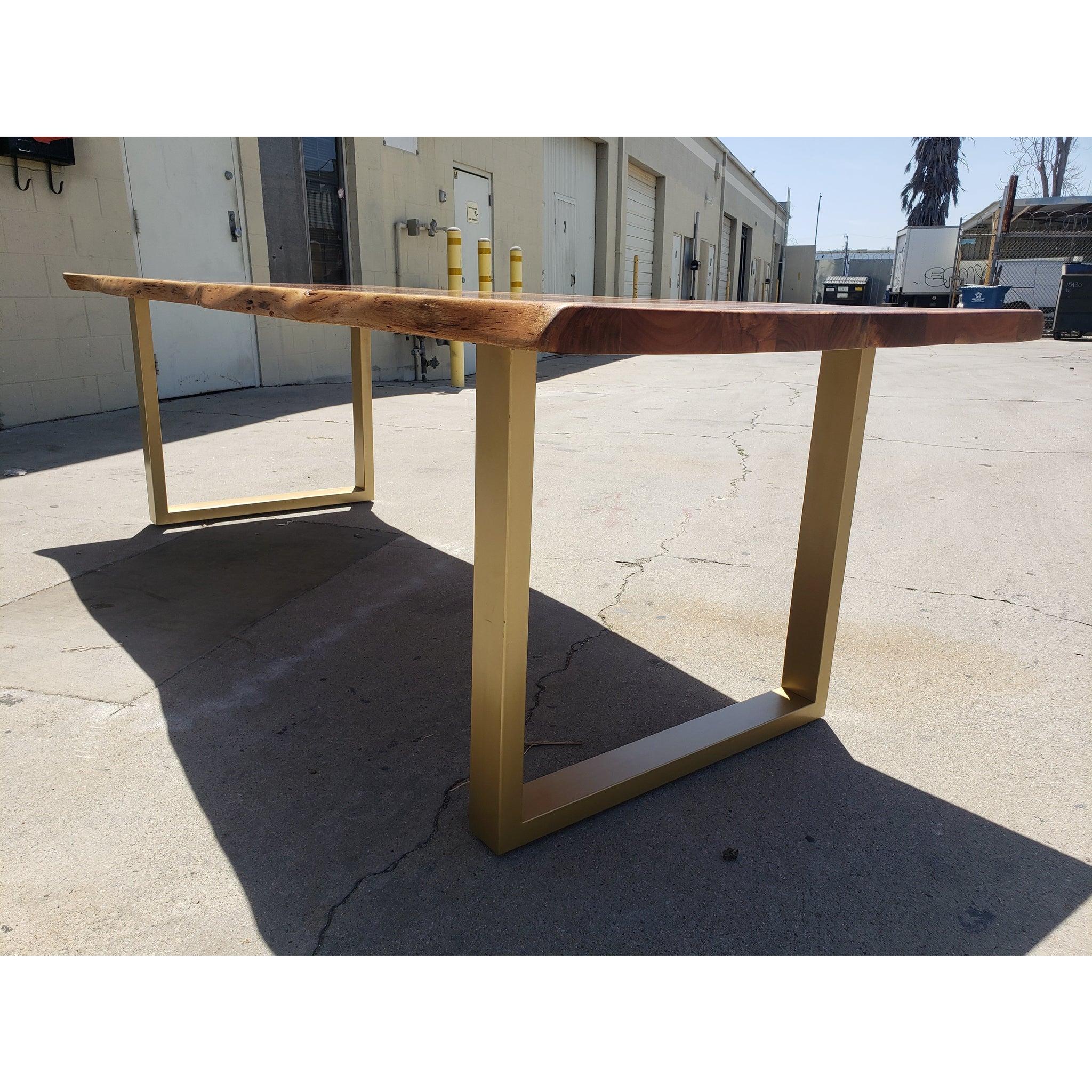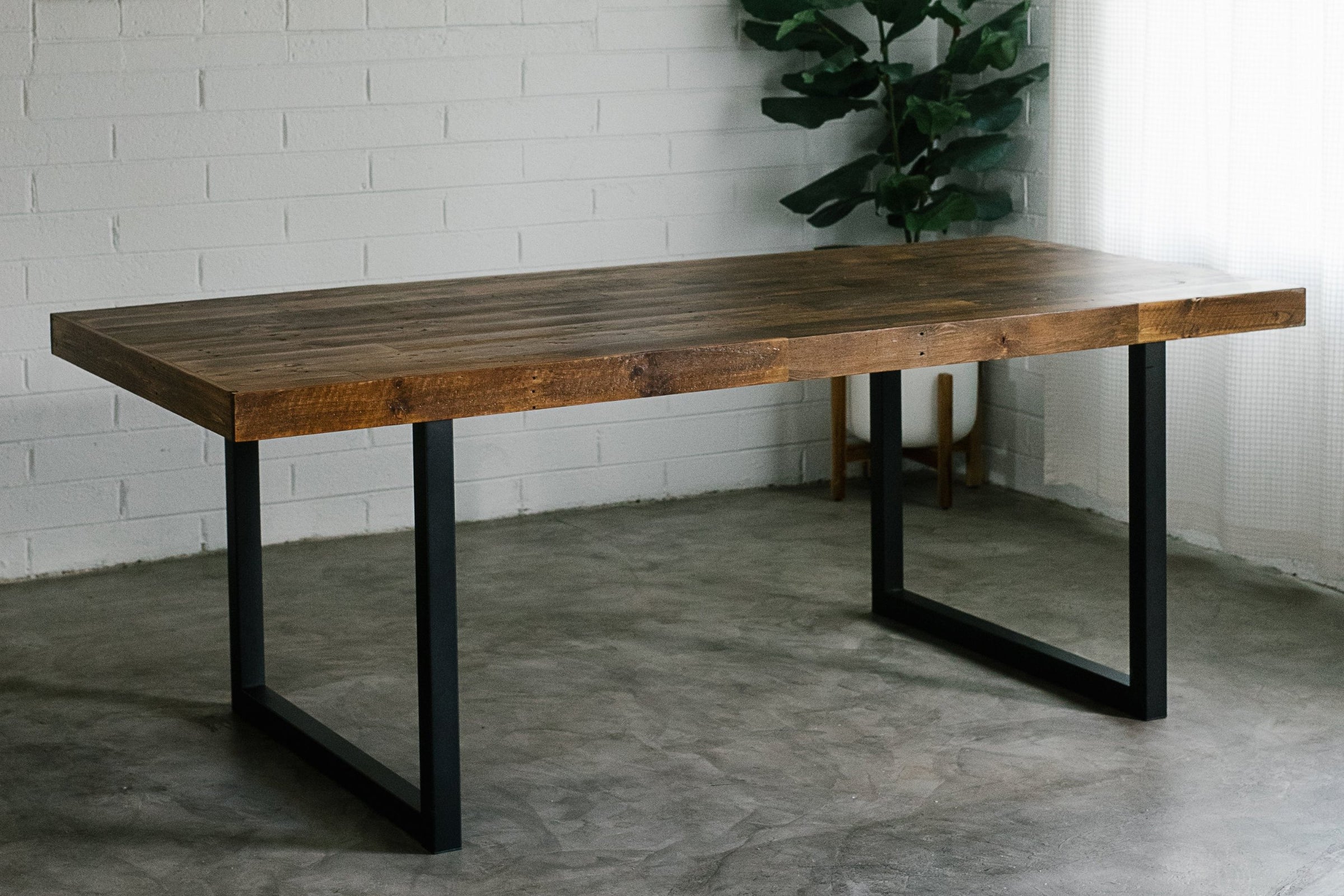Improve Your Eating Experience with Timeless Dining Table Legs Wood
Key Factors to Maintain in Mind for Table Legs Timber Choices
When selecting timber for dining table legs, several critical elements warrant cautious consideration to ensure both functionality and visual charm. The choice of timber type, identified by its sturdiness and special grain patterns, plays an essential duty in the overall style and durability of the piece.
Wood Kind and Features
When picking timber for dining table legs, it is important to recognize the special attributes of various wood types. Various woods supply distinctive advantages and disadvantages, influencing both the sturdiness and aesthetic charm of the ended up item.
Hardwoods, such as cherry, oak, and maple, are commonly favored for their toughness and resistance to use. Oak, recognized for its outstanding longevity, additionally features a noticeable grain that can add personality to the table. Maple supplies a smooth surface and is less prone to warping, making it a trustworthy option for functional furnishings. Cherry wood, with its abundant shade that deepens in time, supplies a luxurious appearance but may need even more upkeep to stop scrapes.
On the various other hand, softwoods like ache and fir are much more economical and simpler to deal with, yet they are less long lasting than woods. Pine is light-weight and features a warm, rustic appearance, making it a popular option for casual eating setups. However, it is more at risk to scratches and dents.
Recognizing these qualities will aid in making an educated decision to make sure the legs of the table meet both useful and visual requirements.
Grain Patterns and Looks
The wood's grain is not simply an aesthetic attribute; it imparts an unique personality and beauty to each item. Various timber types display distinctive grain patterns, ranging from the straight lines of maple to the elaborate swirls of oak and the striking figure of walnut.
Additionally, the positioning and range of the grain can affect the viewed dimension and beauty of the table. Larger, a lot more obvious grains might provide a bold, dramatic result, while finer, subtler grains can develop a refined, understated look. Additionally, the ending up process can further enhance these patterns, emphasizing the natural elegance of the timber and highlighting abundant hues.
Inevitably, the choice of grain pattern must integrate with other style aspects, such as the table top and bordering furnishings, making certain a cohesive aesthetic that elevates the dining experience. Thoughtful selection of timber grain not just contributes to the table's appeal but likewise shows the proprietor's preference and style.
Toughness and Stamina
The resilience and stamina of dining table legs are critical factors to consider for guaranteeing durability and stability in any eating room. Picking the appropriate wood is crucial, as various species display varying levels of strength.

Inevitably, buying premium wood and durable construction techniques will generate a dining table that stands the examination of time, while offering a reliable structure for numerous dishes shared amongst family and buddies. Prioritizing durability and strength guarantees that your dining table continues to be practical and visually pleasing for several years ahead.
Upkeep and Treatment
Proper maintenance and care are important for preserving the durability and strength of table legs made from timber. Regular cleaning is necessary; making use of a soft, moist cloth ensures that dirt and particles do not build up, which can lead to scratches and dullness. It is recommended to avoid harsh chemicals or abrasive products that might harm the finish.
In addition, applying an appropriate wood gloss or wax regularly can assist keep the luster and secure the wood from moisture and spills. It is essential to adhere to the supplier's suggestions pertaining to the kind of item to utilize, as specific finishes might respond negatively to specific chemicals.
Moisture and temperature level variations can additionally impact wood table legs, creating them to warp or split. It's ideal to position the table far from straight sunlight and warm sources. Addressing these immediately can avoid further damage. if the table legs have any damages or scrapes.
Finally, periodically examining the joints and screws for rigidity is necessary to preserve architectural honesty (Dining Table Legs Wood). By sticking to these upkeep practices, home owners can guarantee their wooden table legs remain useful and attractive for many years to find
Environmental Considerations
When choosing timber for dining table legs, it's necessary to take environmental considerations right into account. The sourcing and sustainability of wood are critical in minimizing environmental effect. Selecting wood from licensed resources, such as those endorsed by the Woodland Stewardship Council (FSC), ensures that the hardwood is collected sensibly, advertising woodland preservation and biodiversity.

Moreover, regional sourcing of timber reduces transportation discharges, sustaining regional economic climates while minimizing ecological effect. It is more helpful hints also advisable to be knowledgeable about the wood's therapy and finishing procedures, as specific chemicals can be hazardous to both human health and wellness and the atmosphere. By focusing on lasting wood choices, customers can add to environmental preservation while appreciating the sturdiness and charm of their table legs.
Verdict
In final thought, picking wood for eating article table legs necessitates careful consideration of numerous elements, consisting of wood kinds, grain patterns, and resilience. Upkeep requirements and ecological sustainability further influence timber choices, highlighting the importance of sourcing from licensed or reclaimed materials.
When picking wood for dining table legs, a number of crucial variables warrant cautious factor to consider to ensure both performance and visual allure.Proper maintenance and treatment are essential for preserving the sturdiness and toughness of dining table legs made from wood.When selecting wood for eating table legs, it's essential to take environmental considerations right into account. By focusing on lasting wood selections, customers can add to environmental preservation my explanation while taking pleasure in the toughness and elegance of their eating table legs.
In final thought, selecting wood for eating table legs demands cautious factor to consider of different aspects, consisting of wood kinds, grain patterns, and sturdiness. Dining Table Legs Wood.